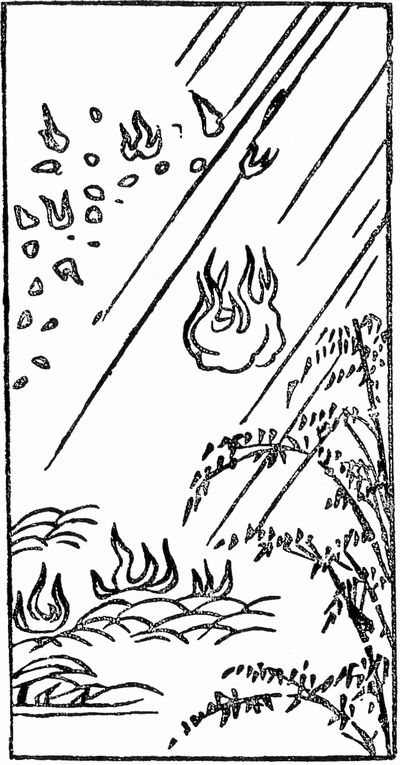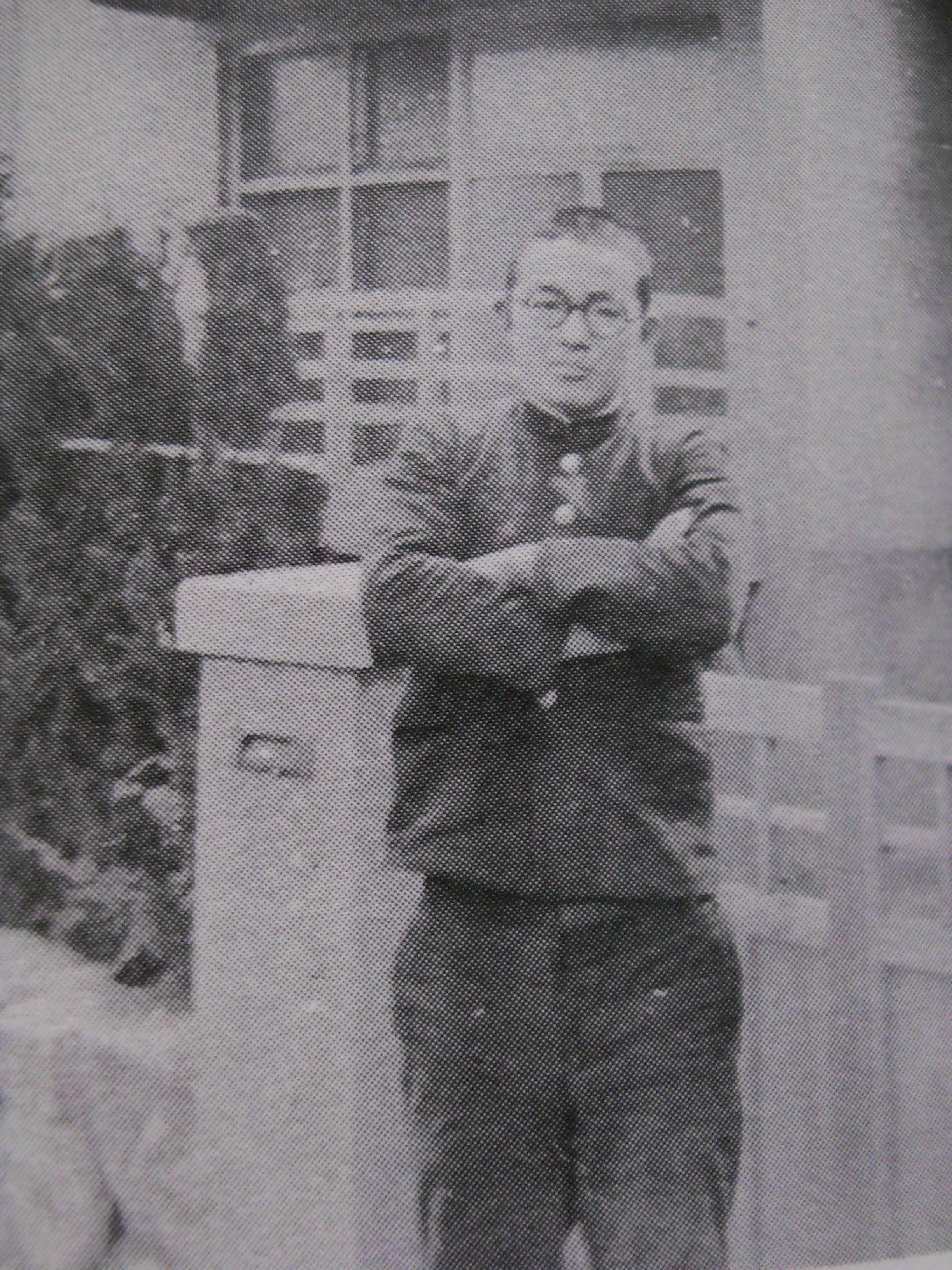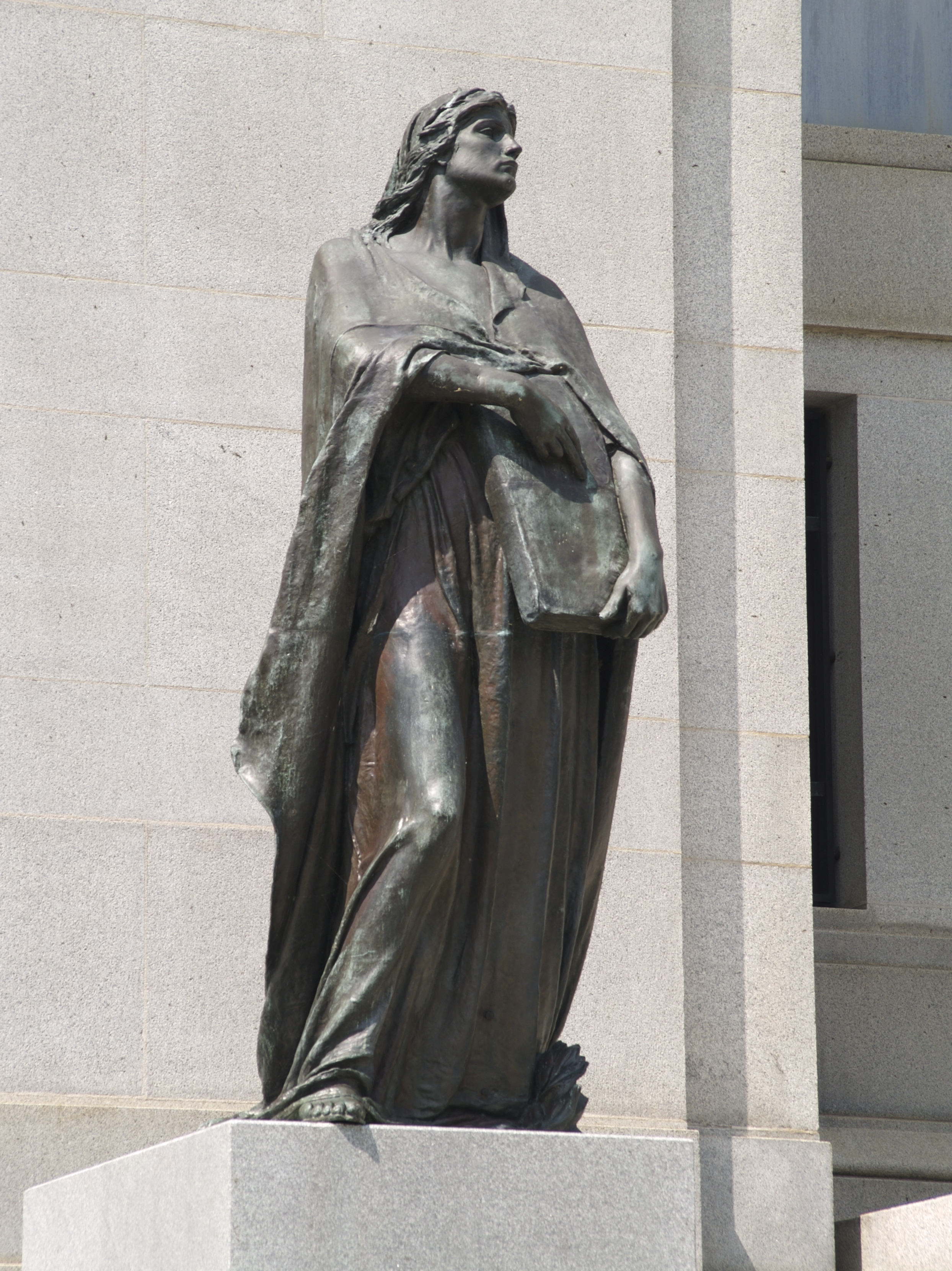|
Tsurubebi
The tsurubebi (釣瓶火, "bucket fire") is a fire yōkai that appears in the ''Gazu Hyakki Yagyō'' by Toriyama Sekien. Concept The illustration does not give any explanatory text, but according to ''Toriyama Sekien Gazu Hyakki Yagyō'', (editor-in-chief, the literary scholar Takada Mamoru, and publisher Kokushokankokai Inc.), they are known by the other names tsurube-otoshi and tsurube-oroshi, and the original kind are the ones that are depicted in the Edo period kaidan (mysterious tale) book, the '' Kokon Hyaku Monogatari Hyōban'', under the title of the "Nishioka no Tsurube-otoshi", where they are yōkai that appear as balls of fire. It gives the interpretation that Sekien also depicted this in the ''Gazu Hyakki Yagyō'' and titled it "Tsurubebi." Interpretations from yōkai-related literature of the Shōwa and Heisei periods onwards almost always consider the tsurubebi to be an atmospheric ghost light that is similar to the tsurube-otoshi or as a different kind of yōkai al ... [...More Info...] [...Related Items...] OR: [Wikipedia] [Google] [Baidu] |
Gazu Hyakki Yagyō
is the first book of Japanese artist Toriyama Sekien's famous ''Gazu Hyakki Yagyō'' e-hon tetralogy, published in 1776. A version of the tetralogy translated and annotated in English was published in 2016. Although the title translates to "The Illustrated Night Parade of a Hundred Demons", it is based on an idiom, ''hyakki yagyō,'' that is akin to pandemonium in English and implies an uncountable horde. The book is followed by ''Konjaku Gazu Zoku Hyakki'', ''Konjaku Hyakki Shūi'', and ''Gazu Hyakki Tsurezure Bukuro''. The book is a supernatural bestiary, a collection of ghosts, spirits, spooks and monsters from literature, folklore, and other artwork. The art of ''Gazu Hyakki Yagyō'' heavily references a 1737 scroll-painting called the ''Hyakkai Zukan'' by artist Sawaki Sūshi; Sekien's innovation was preparing the illustrations as woodblock prints that could be mass-produced in a bound book format. Intended as a parody of then-popular reference books such as the ''Wakan Sans ... [...More Info...] [...Related Items...] OR: [Wikipedia] [Google] [Baidu] |
Shikoku
is the smallest of the four main islands of Japan. It is long and between wide. It has a population of 3.8 million (, 3.1%). It is south of Honshu and northeast of Kyushu. Shikoku's ancient names include ''Iyo-no-futana-shima'' (), ''Iyo-shima'' (), and ''Futana-shima'' (), and its current name refers to the four former provinces that made up the island: Awa, Tosa, Sanuki, and Iyo. Geography Shikoku Island, comprising Shikoku and its surrounding islets, covers about and consists of four prefectures: Ehime, Kagawa, Kōchi, and Tokushima. Across the Seto Inland Sea lie Wakayama, Osaka, Hyōgo, Okayama, Hiroshima, and Yamaguchi Prefectures on Honshu. To the west lie Ōita and Miyazaki Prefectures on Kyushu. Shikoku is ranked as the 50th largest island by area in the world. Additionally, it is ranked as the 23rd most populated island in the world, with a population density of 193 inhabitants per square kilometre (500/sq mi). Mountains running east and west d ... [...More Info...] [...Related Items...] OR: [Wikipedia] [Google] [Baidu] |
Will-o'-the-wisp
In folklore, a will-o'-the-wisp, will-o'-wisp or ''ignis fatuus'' (, plural ''ignes fatui''), is an atmospheric ghost light seen by travellers at night, especially over bogs, swamps or marshes. The phenomenon is known in English folk belief, English folklore and much of European folklore by a variety of names, including jack-o'-lantern, friar's lantern, hinkypunk and is said to mislead travellers by resembling a flickering lamp or lantern. In literature, will-o'-the-wisp metaphorically refers to a hope or goal that leads one on, but is impossible to reach, or something one finds strange or sinister. Wills-o'-the-wisp appear in folk tales and traditional legends of numerous countries and cultures; notable wills-o'-the-wisp include St. Louis Light in Saskatchewan, the Spooklight in Southwestern Missouri and Northeastern Oklahoma, the Marfa lights of Texas, the Naga fireballs on the Mekong in Thailand, the Paulding Light in Upper Peninsula of Michigan and the Hessdalen light i ... [...More Info...] [...Related Items...] OR: [Wikipedia] [Google] [Baidu] |
Onibi
is a type of atmospheric ghost light in legends of Japan. According to folklore, they are the spirits born from the corpses of humans and animals. They are also said to be resentful people that have become fire and appeared. Also, sometimes the words "will-o'-wisp" or "jack-o'-lantern" are translated into Japanese as "onibi". Outline According to the Wakan Sansai Zue written in the Edo period, it was a blue light like a pine torchlight, and several onibi would gather together, and humans who come close would have their spirit sucked out. Also, from the illustration in the same Zue, it has been guessed to have a size from about two or three centimeters in diameter to about 20 or 30 centimeters, and to float in the air about one or two meters from the ground. According to Yasumori Negishi, in the essay " Mimibukuro" from the Edo period, in chapter 10 "Onibi no Koto", there was an anecdote about an onibi that appeared above Hakone mountain that split into two and flew around, gat ... [...More Info...] [...Related Items...] OR: [Wikipedia] [Google] [Baidu] |
Chōchinbi
Chōchinbi (提灯火) is a type of onibi, told in legends in each area of Japan. Overview It is said to appear in footpaths between rice fields, floating about one meter above the ground, disappearing when humans get close to it.多田克己 『幻想世界の住人たち IV 日本編』〈Truth in fantasy〉 新紀元社、1990年、232-233頁。。 In the Tokushima Prefecture in Shikoku, witnesses are said to have observed several tens of paper lantern fires appearing at once and lining up like light bulbs.水木しげる 『妖鬼化 4 中国・四国編』 Softgarage、2004年、106頁。。 Its name comes from how it is presumed to be some kind of monster lighting up paper lanterns; it is also said to be the work of kitsune. In Miyoshi District, Tokushima Prefecture, these chōchinbi are called "tanukibi" (, lit "tanuki fire"), and as according to their name, they are considered to be a fire lit by tanuki.村上健司編著 『妖怪事典』 毎日新聞社、2000年、 ... [...More Info...] [...Related Items...] OR: [Wikipedia] [Google] [Baidu] |
Humus
In classical soil science, humus is the dark organic matter in soil that is formed by the decomposition of plant and animal matter. It is a kind of soil organic matter. It is rich in nutrients and retains moisture in the soil. Humus is the Latin word for "earth" or "ground". In agriculture, "humus" sometimes also is used to describe mature or natural compost extracted from a woodland or other spontaneous source for use as a soil conditioner. It is also used to describe a topsoil horizon that contains organic matter (''humus type'', ''humus form'', or ''humus profile''). Humus has many nutrients that improve the health of soil, nitrogen being the most important. The ratio of carbon to nitrogen (C:N) of humus commonly ranges between eight and fifteen with the median being about twelve. It also significantly affects the bulk density of soil. Humus is amorphous and lacks the "cellular cake structure characteristic of plants, micro-organisms or animals". Description The primary ... [...More Info...] [...Related Items...] OR: [Wikipedia] [Google] [Baidu] |
講談社
is a Japanese privately-held publishing company headquartered in Bunkyō, Tokyo. Kodansha is the largest Japanese publishing company, and it produces the manga magazines ''Nakayoshi'', ''Afternoon'', ''Evening'', ''Weekly Shōnen Magazine'' and ''Bessatsu Shōnen Magazine'', as well as the more literary magazines ''Gunzō'', ''Shūkan Gendai'', and the Japanese dictionary ''Nihongo Daijiten''. Kodansha was founded by Seiji Noma in 1910, and members of his family continue as its owners either directly or through the Noma Cultural Foundation. History Seiji Noma founded Kodansha in 1910 as a spin-off of the ''Dai-Nippon Yūbenkai'' (, "Greater Japan Oratorical Society") and produced the literary magazine ''Yūben'' () as its first publication. The name ''Kodansha'' (taken from ''Kōdan Club'' (), a now-defunct magazine published by the company) originated in 1911 when the publisher formally merged with the ''Dai-Nippon Yūbenkai''. The company has used its current legal name since ... [...More Info...] [...Related Items...] OR: [Wikipedia] [Google] [Baidu] |
水木しげる
was a Japanese manga artist and historian, best known for his manga series ''GeGeGe no Kitarō''. Born in a hospital in Osaka and raised in the city of Sakaiminato, Tottori, he later moved to Chōfu, Tokyo where he remained until his death. His pen-name, Mizuki, comes from the time when he managed an inn called 'Mizuki Manor' while he drew pictures for kamishibai. A specialist in stories of Yōkai (traditional Japanese monsters, ghouls, and goblins), he is considered a master of the genre. Mizuki was also a noted historian, publishing works relating to world history, Japanese history, and his own World War II experience. Life Mizuki was born Shigeru Mura (武良 茂 ''Mura Shigeru'') in the city of Osaka, the second of three sons. He was raised in the coastal city of Sakaiminato 境港, where he spent much of his childhood as a 'scrapper': picking fights and participating in childish warfare with the neighbouring children. He displayed from an early age a particular talent f ... [...More Info...] [...Related Items...] OR: [Wikipedia] [Google] [Baidu] |
Truth In Fantasy
Truth is the property of being in accord with fact or reality.Merriam-Webster's Online Dictionarytruth 2005 In everyday language, truth is typically ascribed to things that aim to represent reality or otherwise correspond to it, such as beliefs, propositions, and declarative sentences. Truth is usually held to be the opposite of falsehood. The concept of truth is discussed and debated in various contexts, including philosophy, art, theology, and science. Most human activities depend upon the concept, where its nature as a concept is assumed rather than being a subject of discussion; these include most of the sciences, law, journalism, and everyday life. Some philosophers view the concept of truth as basic, and unable to be explained in any terms that are more easily understood than the concept of truth itself. Most commonly, truth is viewed as the correspondence of language or thought to a mind-independent world. This is called the correspondence theory of truth. Various theorie ... [...More Info...] [...Related Items...] OR: [Wikipedia] [Google] [Baidu] |




.jpg)

